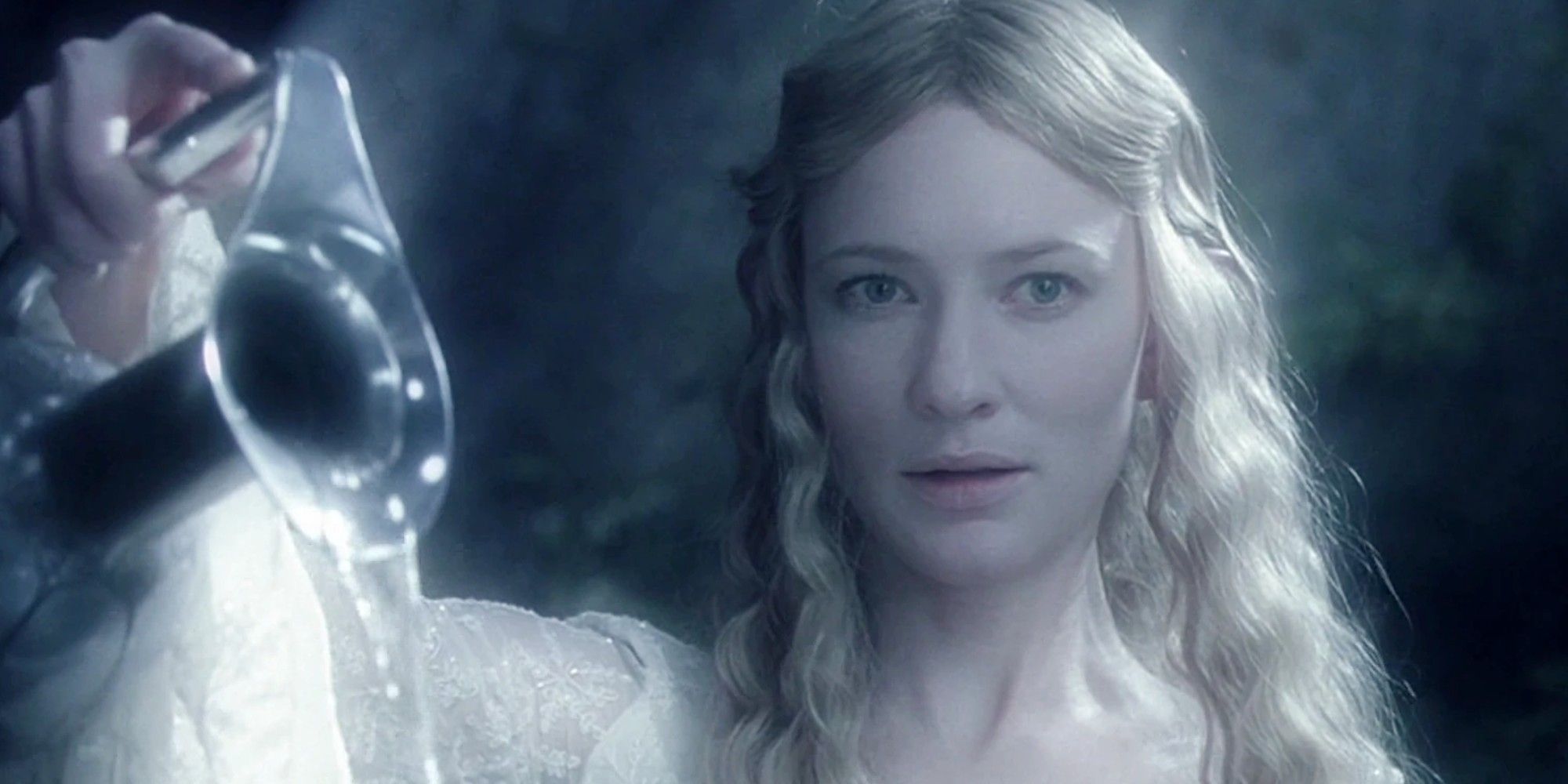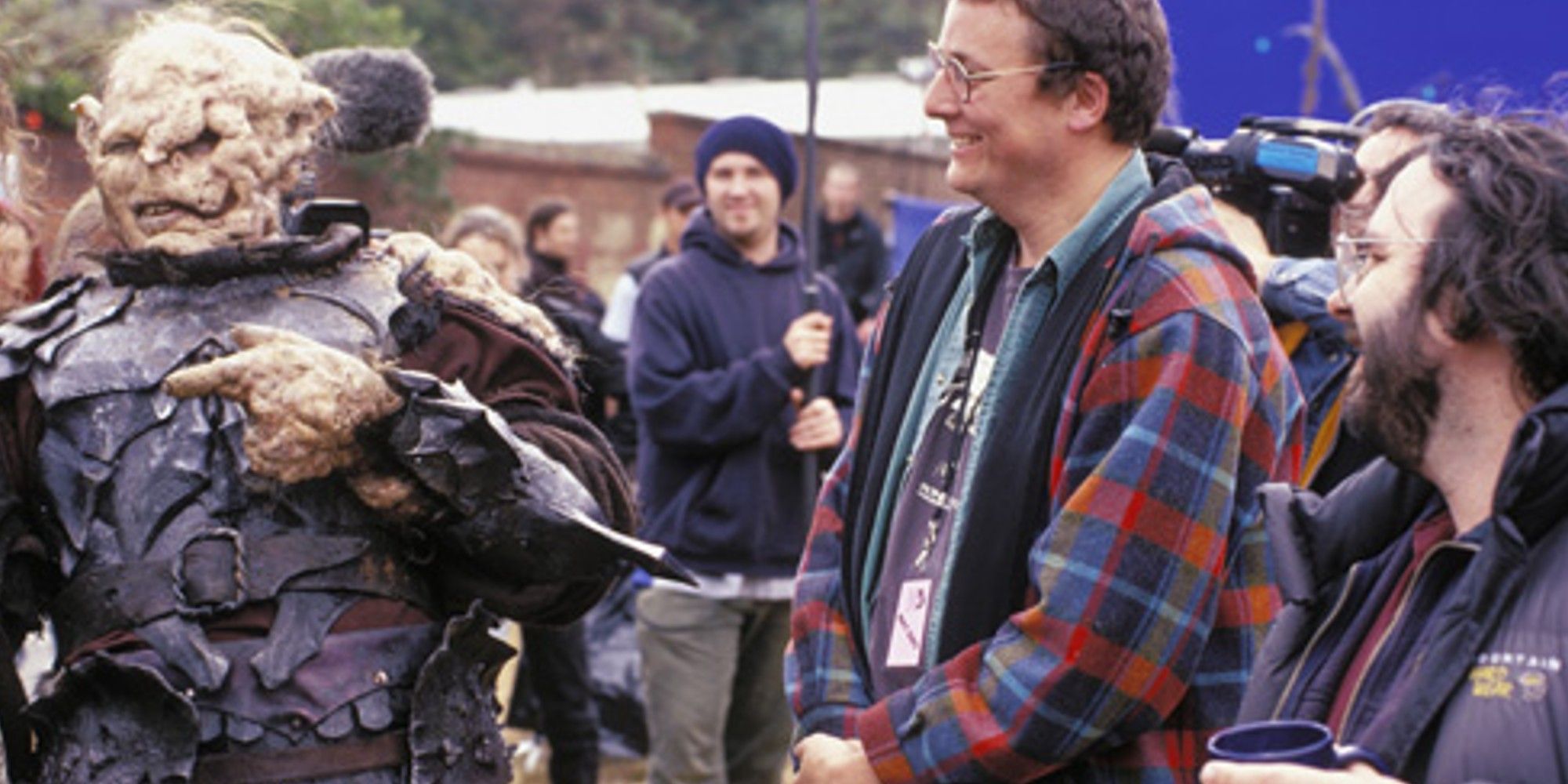The Lord of the Rings star Cate Blanchett reflects on Peter Jackson's film trilogy, revealing one of her favorite visual effects used during the production that made the films stand out among other Hollywood releases. Blanchett portrayed the elf ruler of Lothlórien Galadriel throughout the director's early 2000's film trilogy adaptation of J. R. R. Tolkien's works. Jackson's trilogy is critically acclaimed with The Lord of the Rings: Fellowship of the Ring being selected by the National Film Registry as a culturally important film.
Beginning with The Fellowship of the Ring in 2001, The Lord of the Rings film trilogy brought the fantasy world of Middle-earth from the page into live-action on the big screen. Depicting Frodo Baggins' (Elijah Wood) odyssey from the safety of the Shire to the scorched plains of Mordor to destroy an all-powerful cursed ring, the trilogy is widely regarded as one of the most critically praised and influential film series of all time, launching a successful franchise that continues to this day through Prime Video's prequel series, The Lord of the Rings: The Rings of Power. And while The Rings of Power season 2 may begin filming soon and continue to explore new events in Middle-earth's history, one of the original film trilogies' stars has reflected on the production of Jackson's films.
During an appearance on First We Feast's hit interview series "Hot Ones" that was uploaded to YouTube, Blanchett was asked what visual effect technique caught her attention and stood out most during the production of The Lord of the Rings by host Sean Evans. The star revealed that Jackson's use of a split-frame diopter to capture two points of interest of significantly different scales in a single frame stood out to her the most as something that elevated the films. Check out Blanchett's full response below:
I think it was what Peter Jackson called, and I'm sure they're being used a lot now, is a split-frame diopter. It's something they do with the lens that you can hold two people of monumentally different sizes in the same frame. And that they would build a table where on one side everything was obviously, it was a bit like, you know, a piece of theatre is that everything was large on one side, and everything was small on the other side.
But there was something to do with the lens where they were able to hold them, a bit like kind of a funhouse mirror which was really incredible because it was done in camera, which was pretty cool. Because a lot of that stuff, and I think you can feel it when it's all done in post, you know. I love it when those tricks are done in camera.
How Much Of The Effects In Lord of the Rings Was Practical?
Despite Jackson's trilogy omitting certain book details, The Lord of the Rings trilogy still captured audiences' attention throughout their release, with the film's impressive visual effects being one of the series highlights. For the trilogy, Jackson recruited collaborator Richard Taylor to work alongside the artists at Weta Workshop to develop much of the film's practical elements, including costuming, props, and sets. As such, while the film did implement digital effects to create the film's more fantastical creatures and large hordes of warriors for amazing battles, the settings they take place in such as Helms Deep or Minis Tirith were first created as incredibly detailed miniatures that were used for landscape shots. As such, the practical effects help ground The Lord of the Rings trilogy with a sense of realism, helping audiences immerse themselves in the world as something that truly exists.
With both The Hobbit trilogy and The Rings of Power featuring incredible and terrifying practical Orc costumes, the influence of Jackson's The Lord of the Rings trilogy continues to be felt to this day. While the trilogy itself boasted some of the most incredible digital effects put to film as seen in Andy Serkis' motion-capture performance as Gollum, the movies were unafraid to feature just as impressive practical techniques where it could, resulting in some of the most iconic shots of modern Hollywood filmmaking. And as Hollywood has begun to lean more heavily into digital effects through innovations like the Volume, Jackson's trilogy remains a perfect example of what a perfect balance between practical and digital effects can achieve.
Source: First We Feast


